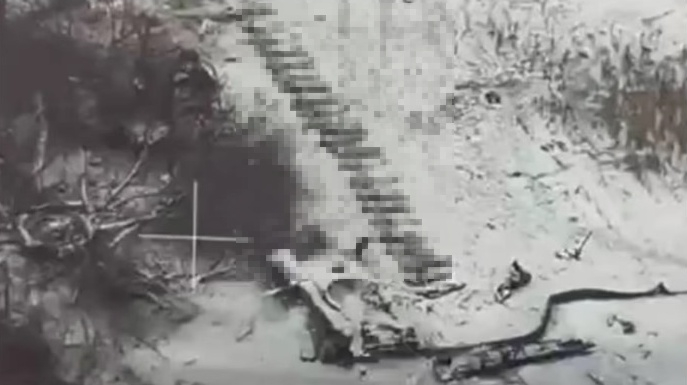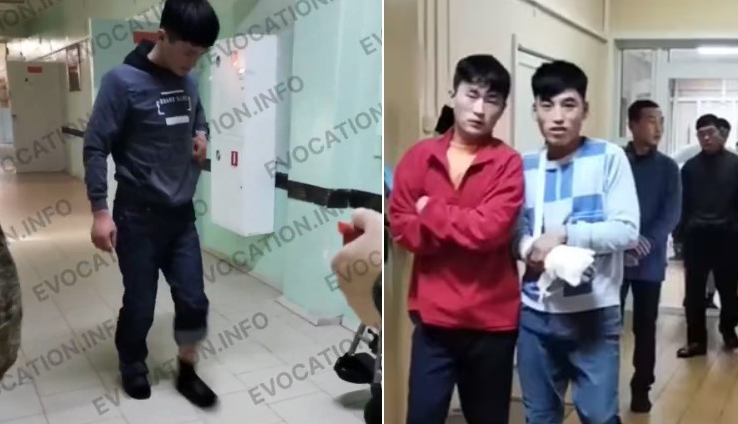The troops, part of an estimated 11,000 deployed to Russia’s western Kursk region, began engaging in combat operations earlier this month, according to People Power Party Rep. Lee Seong-kweun, who shared the findings after a closed-door hearing of the National Assembly’s Intelligence Committee.
The NIS figures follow recent foreign media reports that “several hundred” North Korean troops had been killed or wounded in the Kursk region, according to a senior U.S. military official, with casualties ranging from “lower-level troops to very near the top.”

The spy agency attributed its lower fatality figures to a “conservative” analysis based on intelligence from four Ukrainian agencies and allied nations. It added that it is “highly likely” that the highest-ranking fatality among the troops may be a general. It also reported several prior casualties among senior North Korean soldiers during missile and drone strikes as well as during training.
The NIS warned of potential additional deployments of North Korean forces, noting that the Storm Corps, a unit comprising 46,000 personnel across 10 brigades, has “sufficient capacity” for replenishment. It also suggested that the conflict in Ukraine could escalate ahead of expected peace negotiations involving incoming U.S. President-elect Donald Trump, which may result in higher North Korean casualties.

Domestically, the NIS reported “no signs of imminent provocations from North Korea” despite South Korea’s ongoing political upheaval following President Yoon Suk Yeol’s declaration of martial law and subsequent impeachment. The agency noted that North Korea maintains a “low-key” stance, with military training at typical levels.
The NIS attributed this restrained approach to North Korea’s strategy of projecting indifference toward South Korea in keeping with its “two hostile states” theory, its perception that South Korea’s internal discord benefits Pyongyang and concerns that highlighting South Korea’s democratic system could destabilize its own regime.
The GUR observed that before attacks, North Korean troops gather in groups of 20 to 30 soldiers on the front lines, with smaller groups of six moving to the area of concentration, and use red tape for identification.
The GUR interpreted these tactics as indicating that Moscow is pushing to maintain offensive momentum despite mounting casualties.
Additionally, Ukraine’s Security Service claimed to have intercepted a phone call in which a nurse at a Moscow-area hospital reported treating “over 200 wounded North Korean soldiers” within two days.
With South Korea, along with the international community, imposing independent sanctions on individuals and entities linked to North Korea and Russia for their illegal military cooperation, Russia accused South Korea on Wednesday of sometimes relying on provoking North Korea.

“We urge South Korea to refrain from destabilizing the status quo on the peninsula and return to the path of neighborly relations and constructive dialogue with its neighbors [North Korea and Russia],” Russian Foreign Ministry Spokeswoman Maria Zakharova said. She also accused South Korea of spreading “false narratives about threats” from North Korea and Russia.
Citing South Korean media reports, Zakharova alleged that a recent incident involving drones over the North Korean capital of Pyongyang was a South Korean provocation “deliberately designed to frame North Korea and justify martial law in South Korea in order to secure the power of a pro-American faction.”
South Korea’s Foreign Ministry strongly refuted Russia’s accusations.
“It is evident who has worsened the situation in the region,” a ministry official said Thursday. “We call on Russia and North Korea to cease their unjust actions and end their illegal military cooperation, which threatens peace and stability in Northeast Asia and Europe.”
The official criticized Russia for invoking South Korea’s domestic political situation, calling it “inappropriate and regrettable.”




